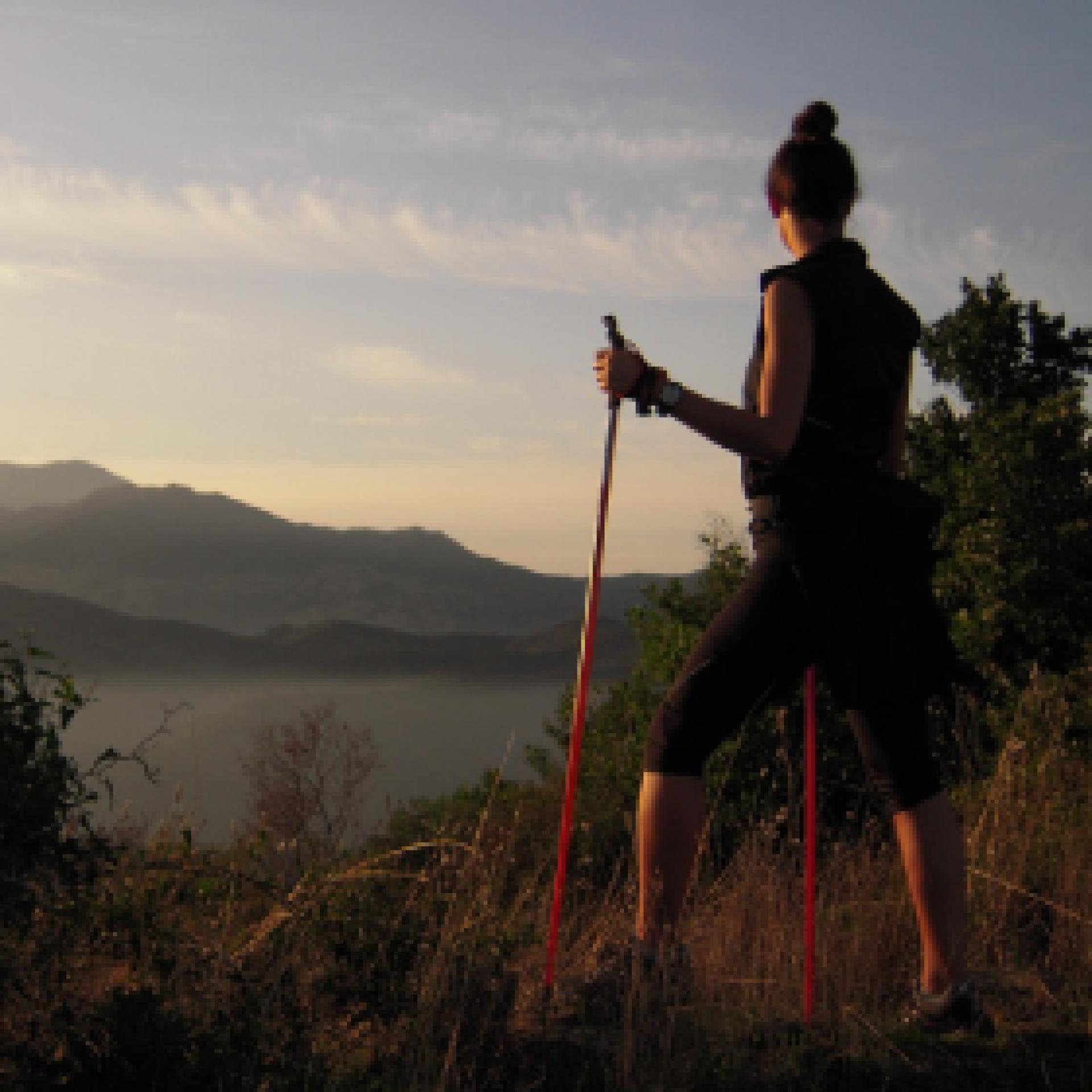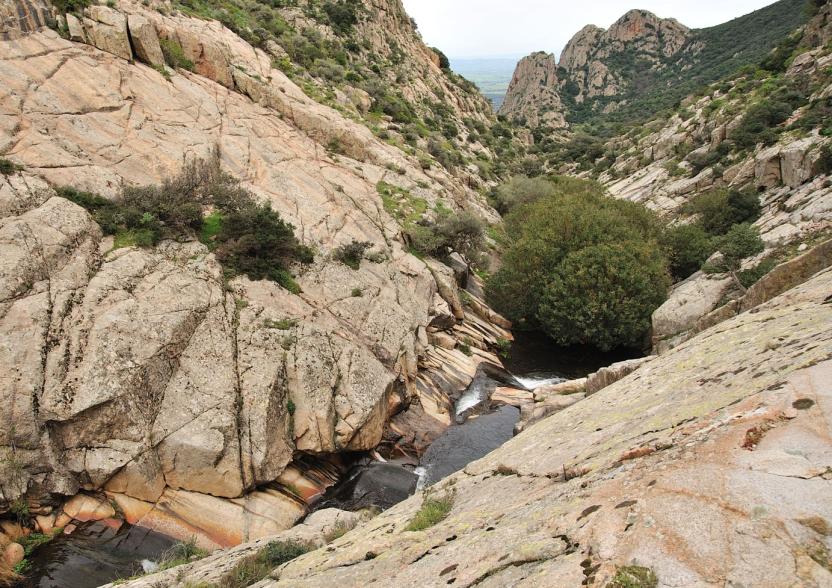AVVERTENZE
QUESTO ITINERARIO è riportato "tal quale" a titolo informativo e di mera recensione/ricognizione degli itinerari presenti nel territorio - come fornito e recensito dal progetto OAST condotto dal GAL BMG nel 2024.
NOTA: Molti itinerari sono composti da percorsi stretti e richiedono una cura periodica della vegetazione, al momento non assicurata da una gestione di tipo ufficiale, non essendo il tracciato inserito nella"rete escursionistica della Sardegna".
Nota 2: Prima di recarvi sul posto si consiglia di raccogliere informazioni sullo stato di fruibilità, presso il comune competente, per avere certezza dell'effettiva percorribilità dell'itinerario scelto.
IL PERCORSO IN PILLOLE (elementi informativi essenziali)
L’itinerario è di grande interesse naturalistico e storico: si sviluppa lungo il corso del fiume Flumendosa, permettendo di scendere sulle rive con alcune brevi deviazioni dall’asse principale. I punti più caratteristici sono Arredelus e Is Caddajas, che non a caso danno il nome all’itinerario, e un punto panoramico, con possibile discesa al fiume, in località Pabani.
Arredelus è un tratto in cui l’acqua si raccoglie in un lago per metà chiuso da alte pareti rocciose e per l’altra metà accessibile con una spiaggia sassosa sulla riva destra e con un’altra spiaggia sabbiosa sulla riva sinistra. La zona specifica deve il suo nome alle filliree angustifolie d’alto fusto (phillyrea angustifolia) presenti sulle rive. Is Caddajas è l’estremità sud dell’escursione, costituita da due laghetti consecutivi circondati da alte pareti di roccia. Insieme hanno una caratteristica forma a clessidra, dove l’acqua del lago di monte si getta nel lago di valle con una cascata alta circa un metro e mezzo in un corridoio angusto perché stretto e buio, per l’altezza delle pareti di roccia che non consente una piena illuminazione dal cielo. Anche in questo caso il nome specifico è in relazione alla natura, perché la forma dei due laghi, e di alcuni altri più piccoli sopra i banchi di roccia, ricorda i paioli dalle alte pareti (caddajas) in cui si riscalda il latte per la cagliata. La località Pabani è rilevante non soltanto per il punto panoramico ma per un ampio spiazzo pianeggiante lungo il sentiero e per un bel laghetto sul fiume, circondato da alte pareti di roccia, seppure inferiori a quelle di Is addajas.
La percorrenza in mountain bike è agevole nella parte iniziale dell’itinerario, vale a dire su sterrato per i primi 2 km, cui segue un tratto di mulattiera di 300 m fino al punto di inizio del sentiero (waypoint INIZIO SENTIERO), dove si può archeggiare la bici e continuare a piedi. Da qui il percorso continua con 700 m di sentiero fino all’estremità sud, con alcuni tratti esposti per i quali si trova ogni tanto un passamano. La deviazione per Arredelus (250 m di lunghezza) può essere percorsa in bici, dato che si sviluppa su sterrata, mentre la deviazione per il punto panoramico di Pabani (appena 200 m di lunghezza) è su una mulattiera più ripida e sconnessa, comunque percorribile in mountain bike.
Su Ponti ‘e Ferru
L’interesse storico dell’itinerario deriva dal fatto che nel tratto iniziale si attraversa il Flumendosa su un antico ponte di ferro (waypoint PONTI ‘E FERRU), realizzato dalle officine Eiffel in moduli componibili. Una volta scaricati al porto di Cagliari, furono trasportati col treno delle allora Ferrovie Complementari Sarde fino alla stazione più vicina – comunque lontana – per poi essere portati sulle rive del fiume con i carri a buoi. Per il regime impetuoso del Flumendosa e per i ripidi versanti della gola in cui scorre, prima di allora i territori di Gadoni e Seulo - rispettivamente a nord e a sud, sulla riva destra e sinista - seppur vicini, erano isolati per lunghi periodi senza che tra le due comunità potessero esserci relazioni frequenti. La costruzione del ponte implicò la costruzione di una sterrata tra i due paesi secondo criteri moderni, al posto delle mulattiere sconnesse e pietrose che conducevano ai guadi. La allora nuova strada si caratterizzava per le pendenze diluite, per i muri di contenimento e i muretti di protezione, che si possono ancora ammirare nella prima parte del percorso, dal punto di partenza fino all’inizio della mulattiera (waypoint INIZIO MULATTIERA). Questa importante risorsa viaria è stata sostituita soltanto all’inizio degli anni Novanta del Novecento dalla costruzione di un viadotto - alto 120 m e lungo 500 m, il più alto della Sardegna - per il quale l’intero collegamento tra i due paesi è stato asfaltato, fortunatamente lasciando nella parte bassa della gola, al di sotto del viadotto, l’antica sterrata col suo caratteristico ponte.
Informazioni utili
Il territorio LEADER del Gruppo di Azione Locale (GAL) Distretto Rurale Barbagia Mandrolisai Gennargentu (BMG)
Costituito dall'Unione dei Comuni Barbagia e dalla Comunità Montana Gennargentu Mandrolisai. Il GAL BMG comprende, quindi, 19 comuni, per una superficie complessiva di 854,30 kmq e una popolazione residente pari a circa 22.000 abitanti:
Aritzo, Atzara, Austis, Belvì, Desulo, Gadoni, Gavoi, Lodine, Meana Sardo, Ollolai, Oniferi, Olzai, Ortueri, Ovodda, Sarule, Sorgono, Teti, Tiana, Tonara.
Il GAL Distretto Rurale BMG, costituito nel 2009, è una Fondazione di partecipazione composta da 22 soci pubblici e oltre 200 privati, rappresentativi delle principali componenti istituzionali, economiche e sociali del territorio. La fondazione ha lo scopo di migliorare la qualità della vita e il benessere delle comunità nelle regioni storiche Barbagia, Mandrolisai e Gennargentu mediante la valorizzazione delle risorse locali.
I principali ambiti tematici e di intervento individuati dal GAL BMG per la definizione della propria Strategia di Sviluppo Locale 2014-2022 sono lo sviluppo e l’innovazione delle filiere e dei sistemi produttivi locali, l’inclusione sociale ed il turismo sostenibile.
IL PROGETTO OAST: OUTDOOR ACTIVITIES FOR SUSTAINABLE TOURISM
Il progetto, coordinato dal GAL BMG in partenariato con il GAL Sisteron-Buëch (Francese) e
il GAL Kilkenny (Irelanda), intende promuovere un turismo sostenibile e attivo nelle aree
rurali d’Europa.
L’obiettivo specifico del progetto è stato potenziare e sviluppare l’attrattività turistica delle acque
interne della Barbagia, attraverso gli sport all’aria aperta e le attività acquatiche, in coerenza con l’ambito tematico “turismo sostenibile” prescelto nel PDA del GAL BMG.
I tre territori coinvolti vantano un patrimonio naturalistico, paesaggistico e culturale ricco e variegato con forti caratteri identitari ed enormi potenzialità di sviluppo di turismo attivo.
Tuttavia, sono stati evidenziati alcuni problemi comuni a tutti i partner, quali: l’insufficiente valorizzazione e promozione turistica delle aree interne, l’isolamento, l’assenza di un network internazionale utile per lo scambio di buone prassi, e l’insufficiente diversificazione, delocalizzazione, destagionalizzazione e l’internazionalizzazione dei flussi turistici. Il Progetto OAST nasce per rispondere a queste criticità, in quanto il turismo attivo ed il turismo sostenibile rappresentano la base di rilancio dei territori caratterizzati da enormi problemi di spopolamento, carenza di servizi, disoccupazione e dispersione scolastica.
L’idea, quindi è promuovere forme di turismo sostenibile, attivo, responsabile ed esperienziale, nonché
offrire soluzioni diversificate e destagionalizzate adatte ad un numero di turisti attivi in continua crescita.
L’azione specifica ha previsto la georeferenziazione e descrizione, in lingua italiana e inglese, di
19 itinerari del GAL BMG legati al tema dell’acqua. Le tracce degli itinerari sono disponibili e scaricabili, in formato Gpx, in queste pagine e anche nell’account Wikiloc del GAL BMG


